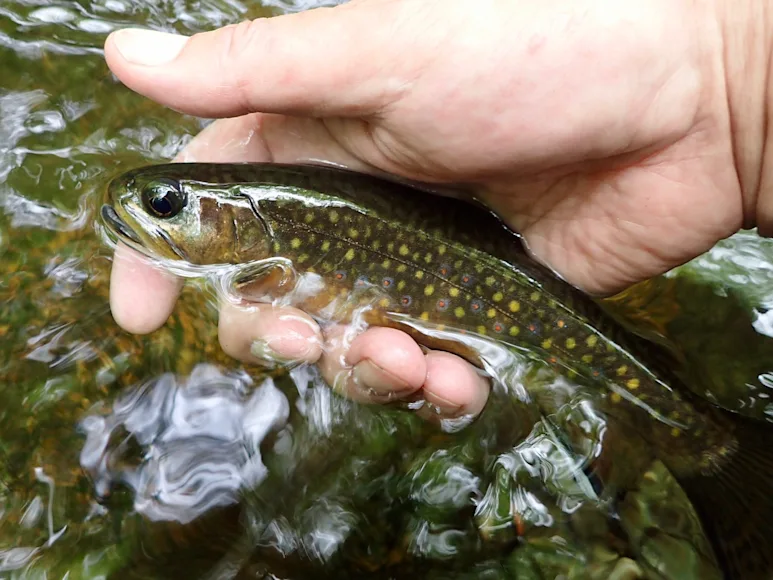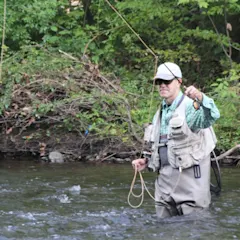If there’s a better way to enjoy fly fishing at its most wondrous than on a small stream, I’ve yet to experience it. There’s something about a thin blue line hidden deep in the woods that invites you to touch fly fishing’s very soul. I consider my beloved small streams to be not so much fishing spots as cathedrals. The water is cold and clean, the air unspoiled, and the resident char wild. Their lineage dates back to the previous ice age. It’s not hard to imagine that a thousand years ago these sacred waters and woods looked exactly as they do today.
Small streams are everywhere. Some of them are miles from any town. Others are hidden in plain sight in urban and industrial areas. Many of them are home to self-sustaining populations of wild trout. And one of the best parts of fly fishing these gems is that it’s easy to get started.
The Best Fly Fishing Gear for Fishing Small Streams
Small Stream Fly Rod
You don’t need expensive gear to enjoy small stream fishing. I like a short, slow-action rod between 6 and 7 feet—that length is easy to maneuver in dense underbrush. It’s hard to go wrong with a 5-weight, although many aficionados love their 3- and 4-weights. A new 6’6” Cabela’s CGR 4-weight
will run you well under a hundred dollars. And it gets you into fiberglass, a classic rod blank material. You can also look for deals in the used section of your local fly shop. (I own several previously loved small stream rods and reels).
Fly Fishing Reel and Line for Fishing Small Streams
Get the cheapest reel you can find. The vast majority of fish you’ll be catching will never go on the reel; it’s merely a line retention device. Get a floating line to match your rod; I like double-taper lines like Cortland 444 Peach
. Double tapers load the rod quickly, and when one end gets ragged you can simply reverse it. I like a tapered leader to match the rod length, and I carry tippet spools of 5x and 6x.
Other Fly Fishing Gear
You can wear a vest or pack, or go light and stuff things into pockets. You should at least carry some basics: small pliers, nippers, and a stream thermometer; insect repellant that does double-duty on ticks and mosquitoes; and your phone, although you’re at the mercy of the nearest cell tower. Get a small landing net that’s made of fish-friendly netting material. The stocking truck never comes to most small streams, and you’ll want a net that protects your catch before you release it.
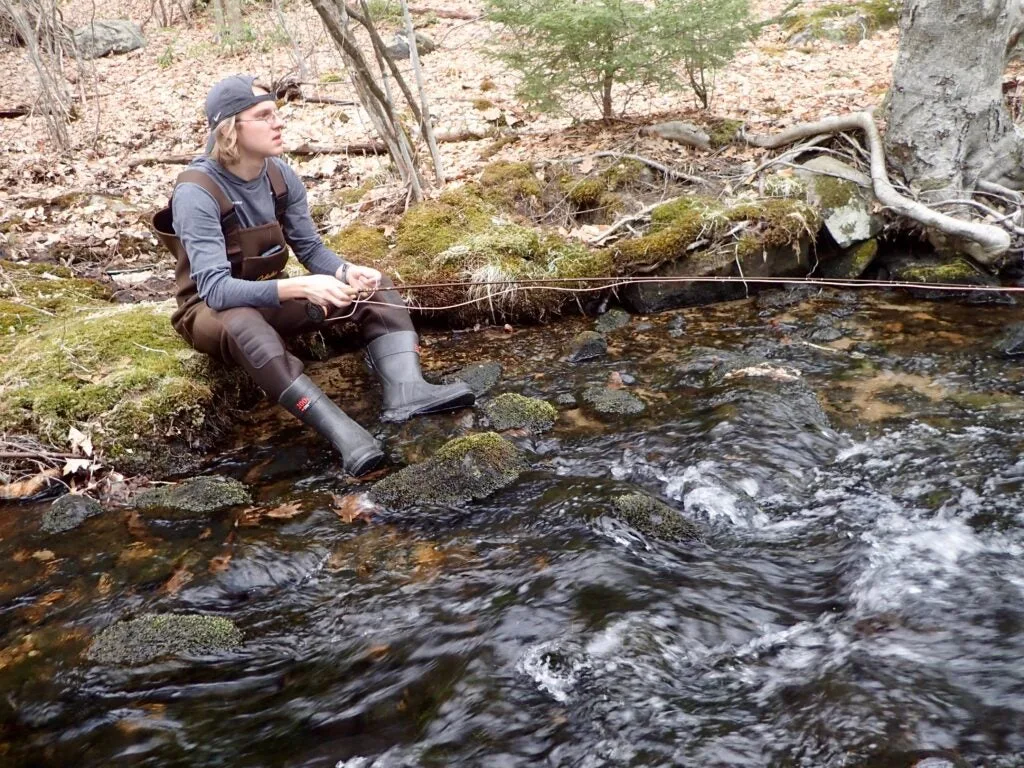
OLYMPUS DIGITAL CAMERA Steve Culton
What to Wear When Fishing Small Streams
Many anglers like to wet wade in shorts, especially in summer, but I’m a big fan of waders on small streams for several reasons. One, the water’s often cold. Two, I’m a klutz, and my shins have a gift for finding submerged rocks. I also find ticks to be a compelling reason to cover your legs. And worst of all, I’m highly allergic to poison ivy.
Depending on where you find your small stream nirvana, you may be hiking distances that can be measured in miles. So lightweight, supportive footwear is a must. My boots are outfitted with tungsten studs for extra gripping power.
Use common sense and dress for the weather. Layering, especially on colder days, is a best practice. Wear a hat and polarized sunglasses. I know, I said gearing up was easy. But you probably have most of these things already.
A Basic Small Stream Fly Box
If you love fishing dry flies, you’re in for a treat: many small stream fish will rise to a dry year-round. To start off, keep things simple. Think bushy patterns like Stimulators and Elk Hair Caddis, sizes 12-16. I like to have a few small nymphs on hand, if only to use in a dry/dropper combo. Size 16-18 bead head Pheasant Tails will serve you well, as they look like lots of things small stream fish eat.
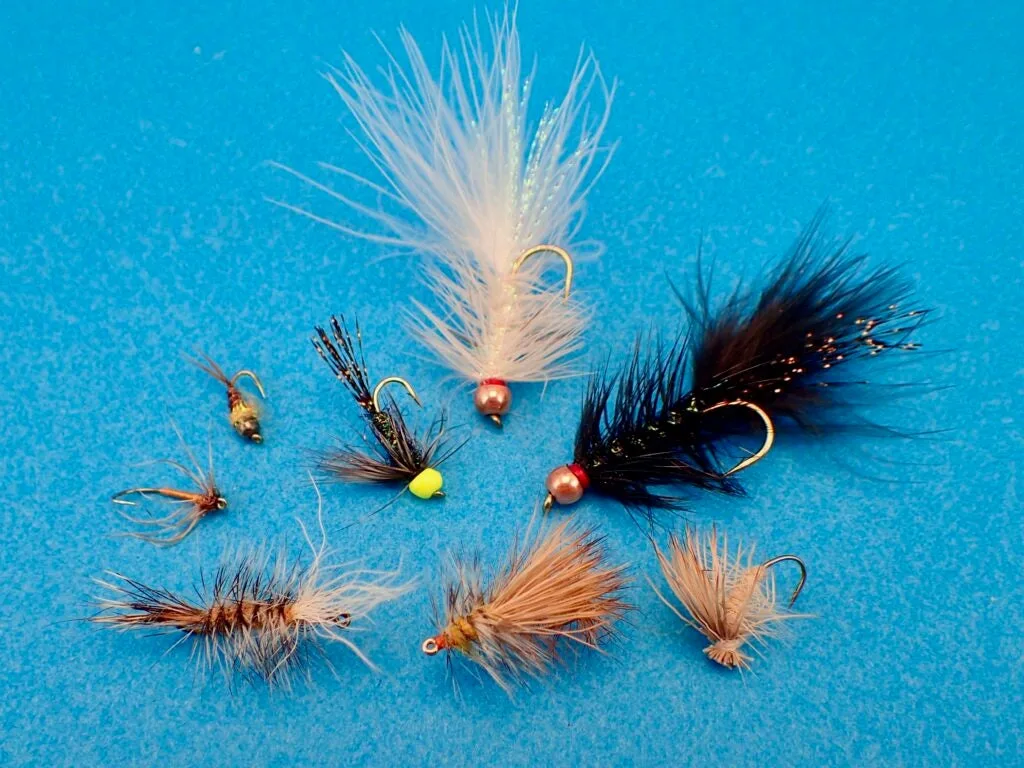
You don’t need a lot of flies to fish for brook trout in a small stream. Steve Culton
Small stream residents are very curious about any submerged fly introduced into their world. There are times when I fish a pool with a dry and get no takers—but when I offer them a wet fly or small streamer, they bull-rush it. I like to carry a few small soft-hackles, as well as some tungsten bead head micro Woolly Buggers (size 10 or smaller). Those can be jigged or stripped. This basic fly box will cover your needs for most small stream situations.
How to Find Viable Small Streams
“Where?” That’s the million-dollar question. My home state of Connecticut publishes a list of small streams, and classifies them from wild trout only to those with supplemental stocking. Check to see if your state’s fish-and-game department does likewise. Other than a list, there are two great ways to find viable small streams. The first involves paying attention as you travel. Take note of all the small streams you cross. Check them out when you can. One of them may be your next secret spot.
The other method involves a little detective work. Get a good, old-fashioned road atlas of your state—one that shows every river and stream—and go exploring. Late summer/early fall is a fantastic time for this because water levels are usually at their lowest and warmest. Many streams will quickly self-eliminate—too dry, too hot, barren of any life. You’re looking for brooks that still have decent flow, canopy to protect them from summer sun, and most of all, cooler water. Many small streams rely on “spring houses”—pockets of water cooled by underground springs—to maintain summer viability. Find a stream with spring houses and you’ve struck gold.
Once you discover a good small stream, keep quiet about it. If you tell one person, you probably just told ten. If you blab on the internet, you just told thousands and thousands. Don’t be that person. An overfished, highly-pressured small stream can go south fast. I’ve seen it happen.
**Read Next: F&S Classics: Quest for the Mother Lode
**
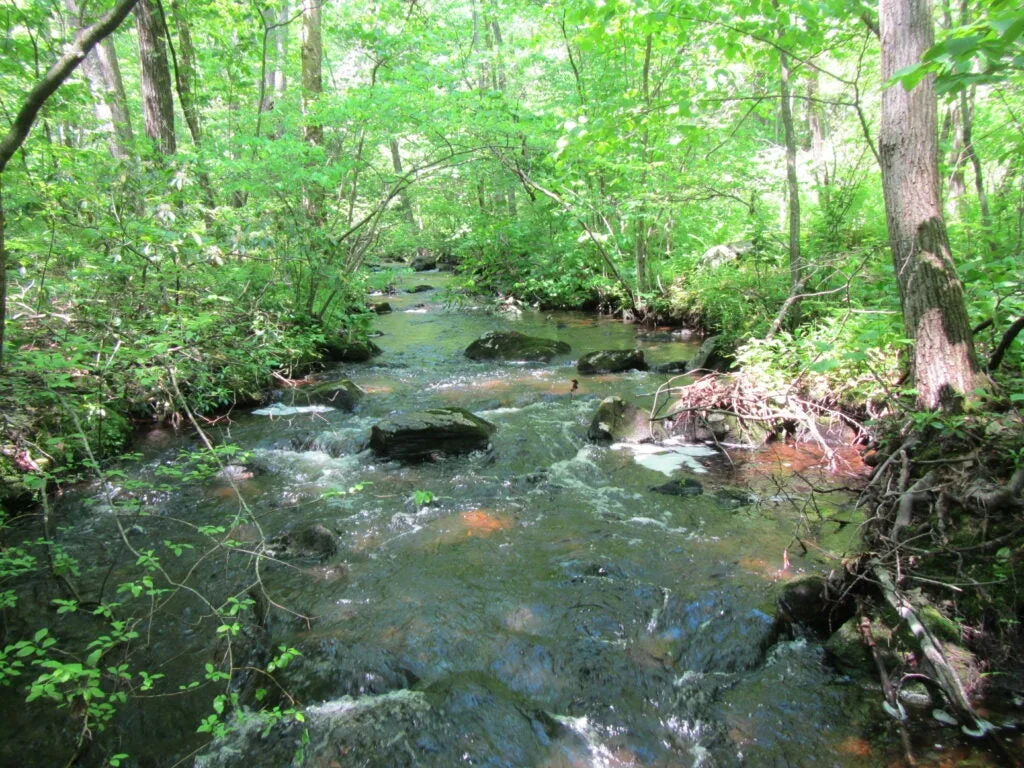
Look for streams with a canopy of trees to keep the water cool. Steve Culton
Basic Tactics for Fly Fishing in Small Streams
The best way to learn how to fish small streams is to go out and do it. Here are some things to try:
Stay out of the water as much as possible.
Tread lightly near soft, slow pools. The fish can feel you coming and may spook. Also, be aware of making sudden movements that can startle fish.
Try fishing upstream, working the whitewater and seams near plunges with a bushy dry fly.
Fish the same runs downstream. Try dangling and waking the fly near plunges; it’s a lethal tactic for brook trout.
Try fishing a dry fly with a small bead head nymph dropped off the hook bend. The fish will always tell you which fly they prefer.
I like to fish wets and streamers downstream, swinging them down current, then jigging or stripping them back.
How to Handle your catch with care
Use only barbless hooks.
Land fish quickly.
Always handle fish with wet hands.
Keep photos to a minimum; always keep fish submerged, then quickly lift and shoot.
_Steve Culton is a guide, speaker, fly tier, and outdoor writer who lives in Connecticut. His website is currentseams.com
._

